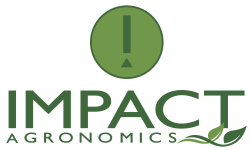
“Soil health is defined as the continued capacity of soil to function as a vital living ecosystem that sustains plants, animals, and humans”. – NRCS
Soil Health In the Tidewater and Blacklands
The Blackland and Tidewater region of eastern North Carolina and southeastern Virginia is home to some of the most productive soils in the world. However, it is not easy to consistently grow crops with good yield and quality. Much of this has to do with the proximity to the coast, which often produces heavy rainfall events which overwhelm drainage structures and cause field flooding. Proximity to the coast also increases the risk for damage from tropical storms and hurricanes. While these risks cannot be eliminated, by consistently improving soil health, these risks can be mitigated to a degree. This issue kicks off a short series on soil health by starting with a definition of a health soil.
Defining a Healthy Soil: Four Principles
1. Optimal Water Management

A healthy soil will be able to hold sufficient water to support crop production and soil biology, while being able to shed excess water quickly because of good internal and surface drainage. Plants and soil biology need water to survive and function; yet too much water can reduce their growth.
2. Good Physical Structure

A healthy soil physical structure is characterized by good soil aggregation, good aeration and lack of compaction. Good physical structure or tilth allows for good infiltration and storage of water, proper nutrient cycling, and provides a good habitat for soil biology.
3. Robust Soil Biology

A healthy soil will have a robust and diverse biological community. Bacteria, fungi, earthworms, and other soil organisms, are an extremely important part of the soil ecosystem. They are responsible for breaking down organic matter, soil aggregation, and nutrient cycling.
4. Sufficient Soil Fertility

A healthy soil will be able to supply sufficient levels of nutrients to maintain healthy and productive crops. Managing soil nutrition, making sure that there are sufficient nutrients for the crop when they are needed most, is essential to promote plant health and profitable crop production.
Over the next four newsletters, we will take a more in-depth look at each of these four topics.
Soil Health Practices Increase Profitability
What would an extra $45 to $50 per acre do for your operation? According to a recent survey conducted by the Soil Health Institute this was the average increase profit for farmers when they were using a soil health management system. By using a system that focused on improving soil health farmers were able to increase profit on soybeans by $44.89 and on corn by $51.60.
Check out this summary by No-Till Farmer: https://www.no-tillfarmer.com/articles/10831-study- soil-health-practices-boost-income-for-85-of-corn-growers/
Or dive into the data at the Soil Health Institute: https://soilhealthinstitute.org/economics/
